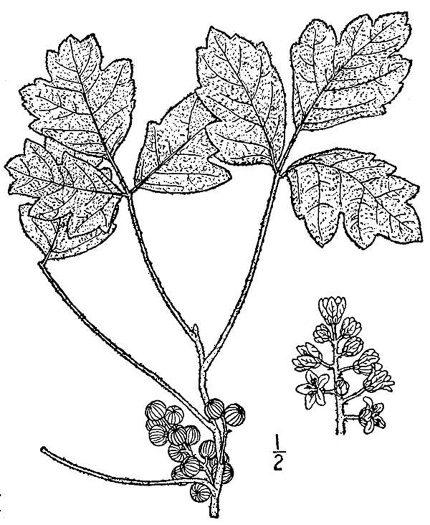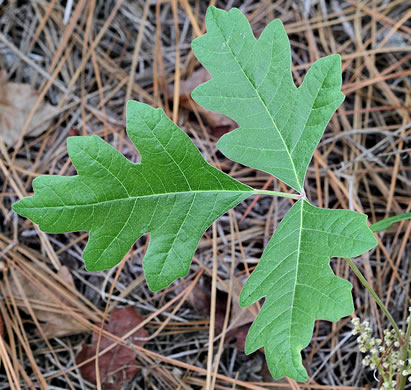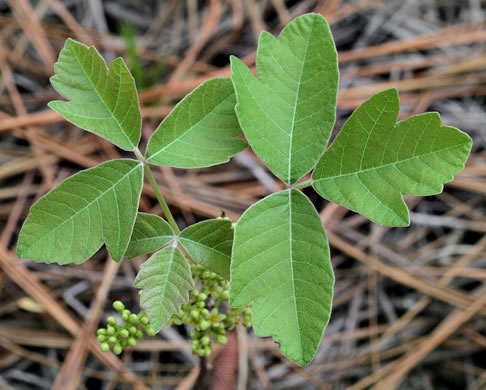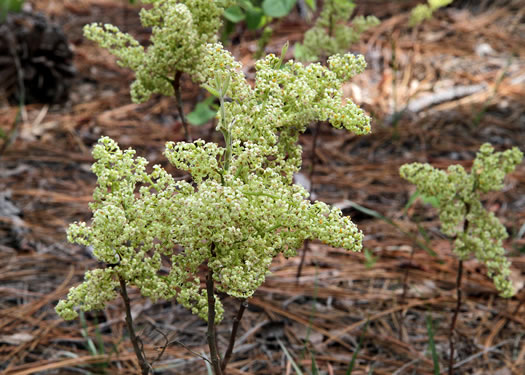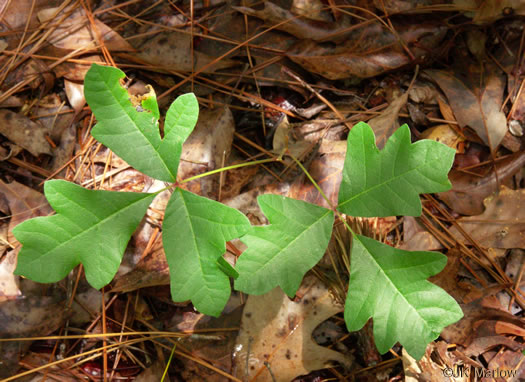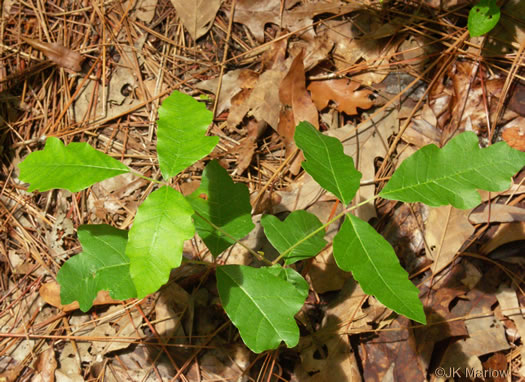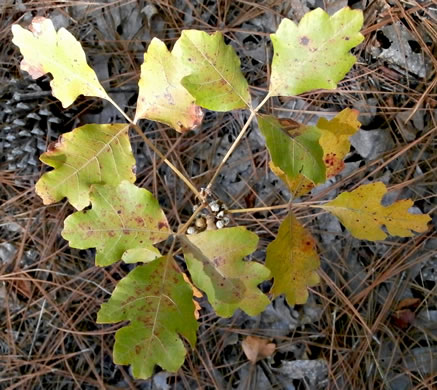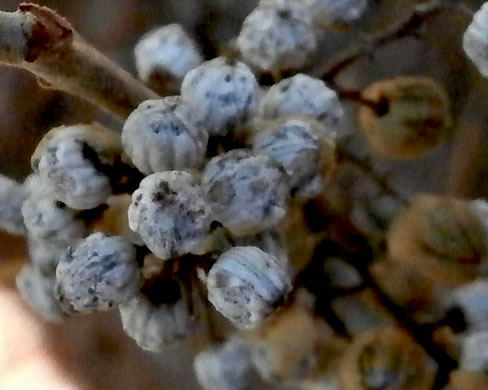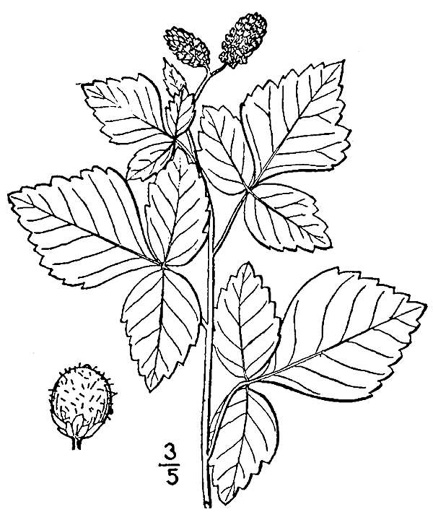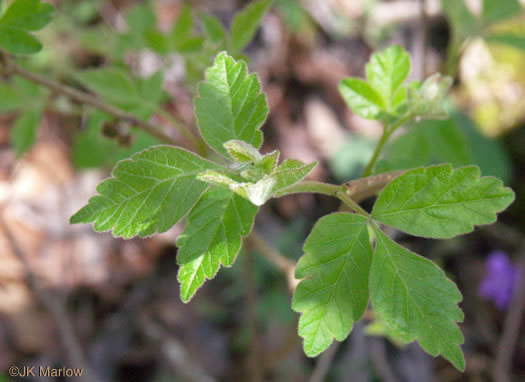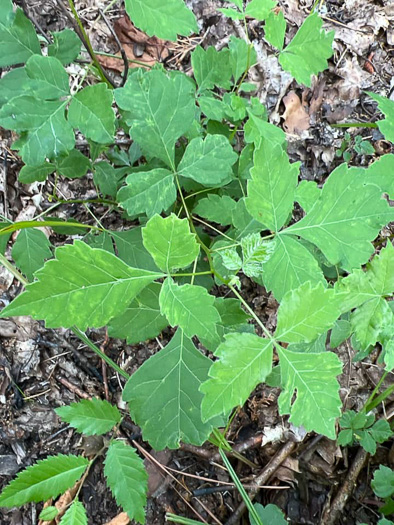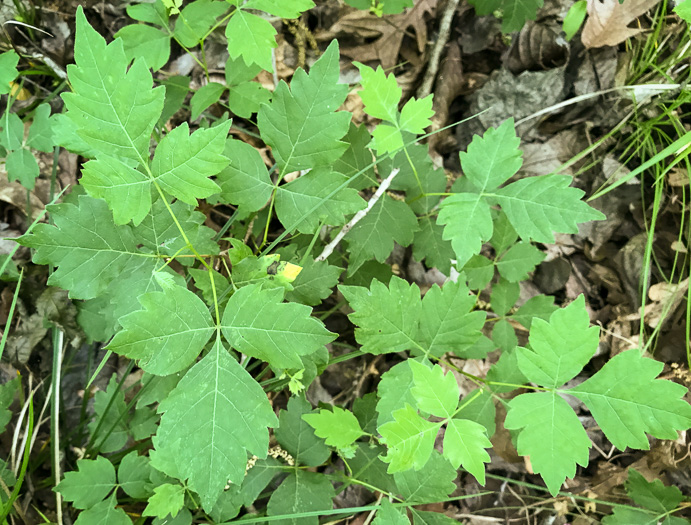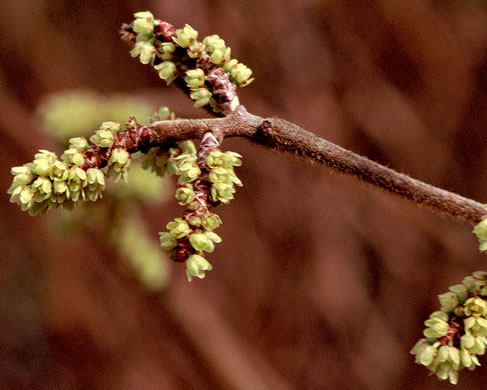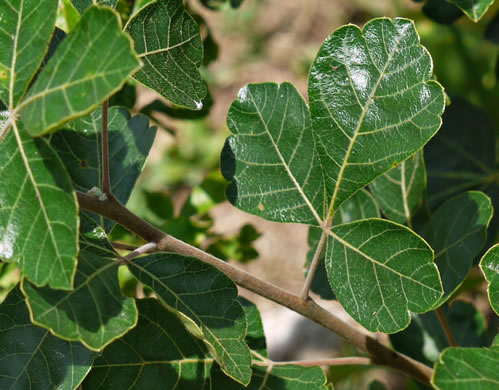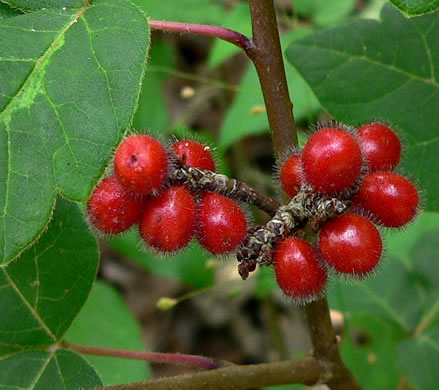Your search found 17 image(s) of Fragrant Sumac and Poison Oak.
To see larger pictures, click or hover over the thumbnails.
To go to the plant's detail page, click its name.
 Habitat: Longleaf pine sandhills, dry upland woodlands, around dry rock outcrops in the Piedmont and Mountains, barrens
Habitat: Longleaf pine sandhills, dry upland woodlands, around dry rock outcrops in the Piedmont and Mountains, barrens
Margins with 1 to 3 undulating to incised lobes (oak-like), per Forest Plants of the Southeast and Their Wildlife Uses (Miller & Miller, 2005).
Leaflets shallowly lobed, coarsely serrate, or rarely entire, per Guide to the Wildflowers of SC, 1st ed. (Porcher & Rayner, 2001).
Flowers greenish-white in dense panicles, per Native Shrubs and Woody Vines of the Southeast (Foote & Jones, 1989).
Petiolules of Toxicodendron's terminal leaflets much longer than laterals', per www.carolinanature.com (Cook).
Leaves dull above (not shiny), per Wildflowers of the Sandhills Region (Sorrie, 2011).
Leaflet lower surfaces velvety puberulent, sometimes becoming glabrate in age, per Weakley's Flora.
Drupe densely hairy, 6-8mm wide, per Forest Plants of the Southeast and Their Wildlife Uses (Miller & Miller, 2005).
 Habitat: Dry to dry-mesic upland forests and woodlands, glade margins, stream banks, bluffs, and pastures, eastwards primarily in rocky, rather dry, woodlands, usually over mafic rocks (such as gabbro or diabase) or calcareous rocks, less commonly in sandy soils
Habitat: Dry to dry-mesic upland forests and woodlands, glade margins, stream banks, bluffs, and pastures, eastwards primarily in rocky, rather dry, woodlands, usually over mafic rocks (such as gabbro or diabase) or calcareous rocks, less commonly in sandy soils
Straggly, upright, rounded shrub, 1'-7' tall, not poisonous, per Wildflowers of Tennessee (Carman, 2005).
Foliage has sessile terminal leaflets (vs. Toxicodendron pubescens has a prominent petiolule), per Weakley's Flora (2022).
Coarsely toothed above mid-leaflet. Lateral leaflets assymmetric & sessile, per Forest Plants of the Southeast and Their Wildlife Uses (Miller & Miller, 2005).
Short dense catkin-like clusters open before or during leaf expansion, per Forest Plants of the Southeast and Their Wildlife Uses (Miller & Miller, 2005).
Petiolule of terminal leaflet is the same length as the lateral petiolules, per www.carolinanature.com (Cook).
Leaflets thick, at first pubescent on both surfaces, glabrate in age, per Vascular Flora of the Carolinas (Radford, Ahles, & Bell, 1968).
Fruits roundish, very hairy, bright red, and quite conspicuous, per Wildflowers of Tennessee (Carman, 2005).

